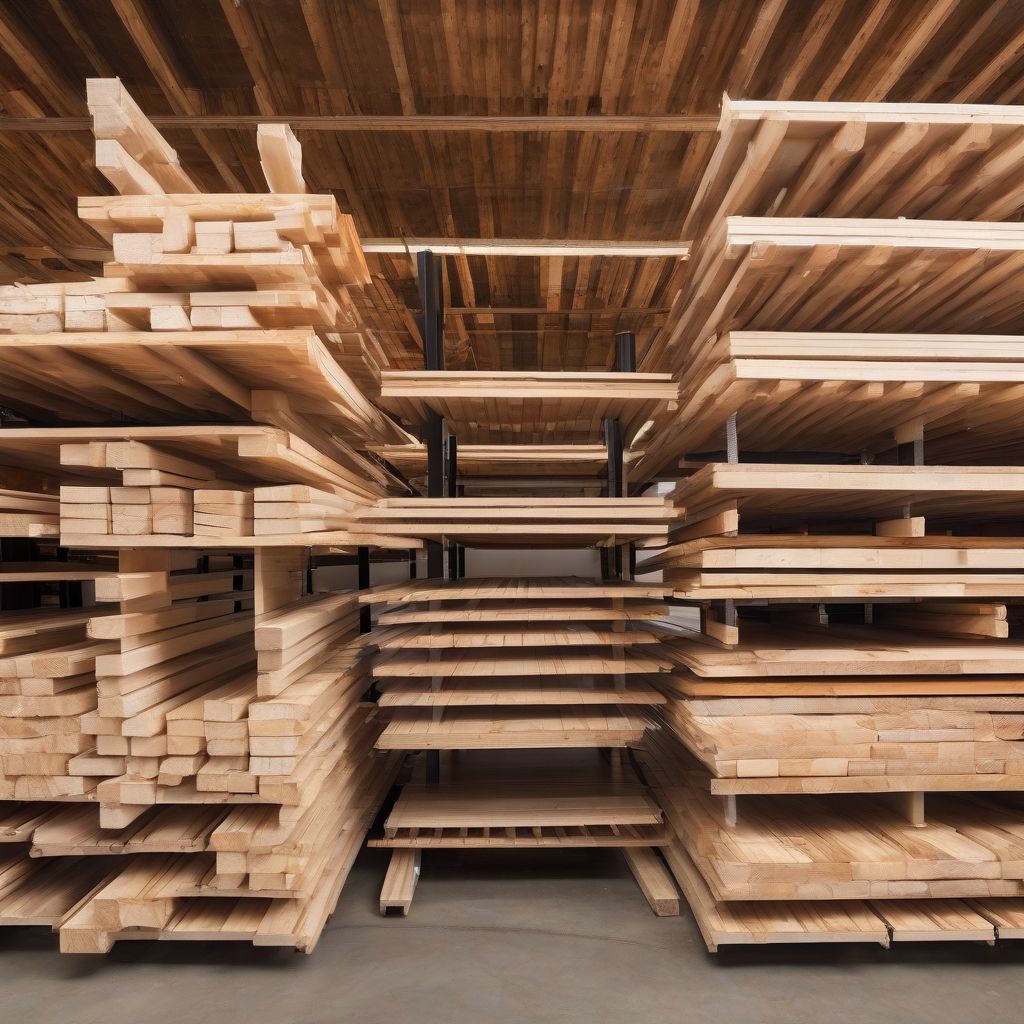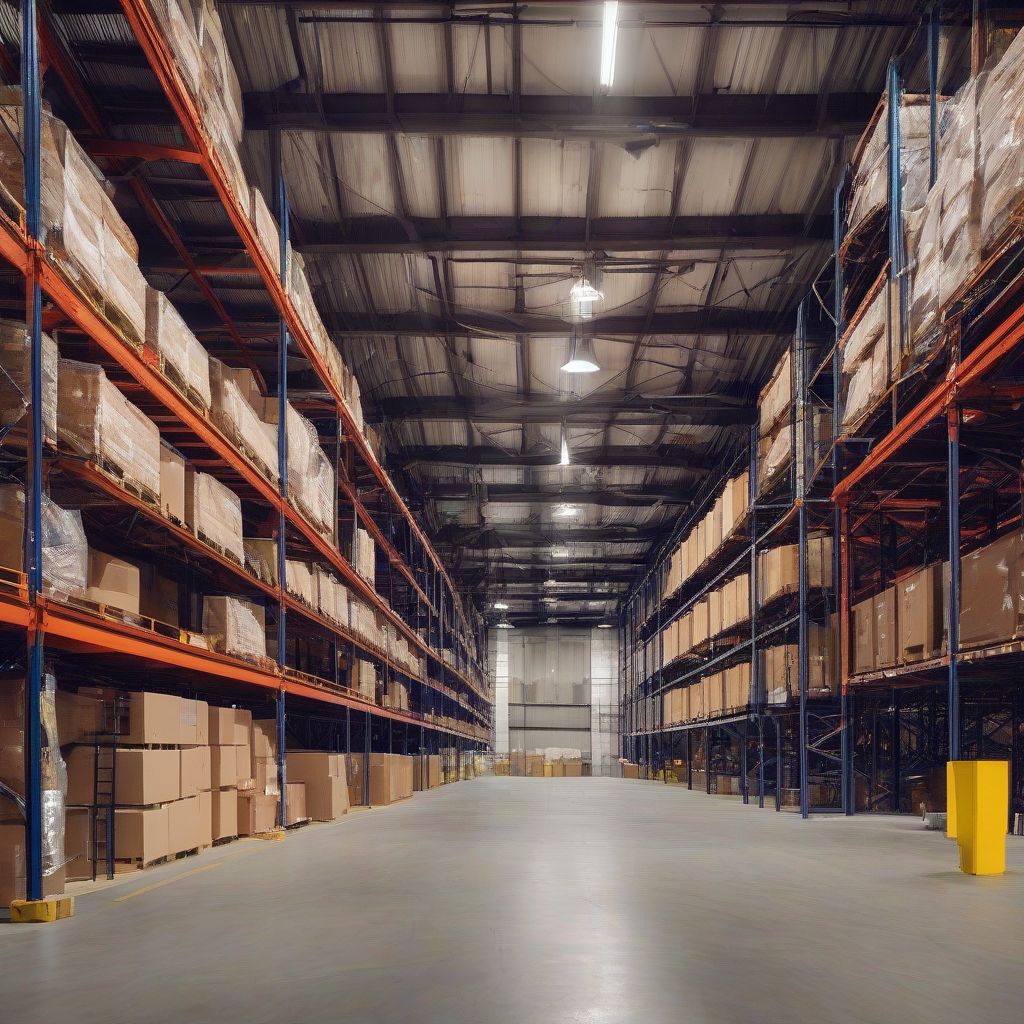Industrial Shelving and Racking: The Backbone of Efficient Operations

In today’s fast-paced industrial landscape, efficiency is paramount. Every square foot of warehouse space and every second saved can significantly impact the bottom line. This is where Industrial Shelving And Racking systems come into play, providing the organizational backbone for a wide range of industries. From manufacturing and logistics to retail and beyond, these systems optimize storage, streamline operations, and ultimately contribute to a more productive and profitable business.
Understanding the Importance of Industrial Shelving And Racking
Industrial shelving and racking is more than just a place to store goods; it’s a strategic investment in operational efficiency. By maximizing vertical space, these systems increase storage capacity within existing footprints, reducing the need for costly expansions. Moreover, organized storage solutions contribute to:
- Improved Inventory Management: Easily locate and track inventory, minimizing losses and reducing downtime searching for misplaced items.
- Enhanced Workplace Safety: Properly designed and installed shelving and racking systems prevent accidents caused by collapsing stacks or falling objects.
- Increased Productivity: Streamlined workflows and easy access to stored goods allow employees to work more efficiently, boosting overall productivity.
Exploring Different Types of Industrial Shelving And Racking
Choosing the right shelving and racking system is crucial, as different industries and applications demand specific solutions. Let’s delve into some common types:
1. Pallet Racking
As the name suggests, pallet racking is designed to store goods on pallets. These systems are incredibly versatile, offering various configurations like selective racking, drive-in racking, and push-back racking, each catering to specific storage needs and pallet access methods.
2. Cantilever Racking
 Cantilever racking holding lumber
Cantilever racking holding lumber
Ideal for storing long, bulky, or oddly shaped items, cantilever racking features horizontal arms extending from vertical columns, providing unobstructed support. This system is commonly found in lumber yards, steel service centers, and furniture warehouses.
3. Shelving Systems
Versatile and scalable, shelving systems offer a wide range of configurations to accommodate various items, from small parts and tools to archived documents and retail inventory. They are available in different materials, including metal, wire, and even plastic, catering to specific load capacities and environmental requirements.
4. Mezzanine Systems
 Mezzanine system installed in a warehouse
Mezzanine system installed in a warehouse
For businesses facing space constraints, mezzanine systems provide a valuable solution. These freestanding structures create additional floor space within an existing building, maximizing verticality for storage, office space, or even production areas.
Key Considerations for Choosing the Right System
Selecting the most appropriate industrial shelving and racking system involves considering several factors:
- Storage Needs: What type of goods are being stored? What are their dimensions, weight, and stacking requirements?
- Space Availability: What is the available floor space and ceiling height? How can the system optimize vertical space utilization?
- Budget Constraints: Different systems come with varying costs. It’s crucial to balance functionality with affordability.
- Future Growth: Will storage needs change in the future? Selecting a system with scalability and adaptability ensures long-term efficiency.
The Future of Industrial Shelving And Racking
As technology continues to advance, the industrial shelving and racking industry is evolving alongside it. Automated storage and retrieval systems (AS/RS) are becoming increasingly prevalent, utilizing robotics and sophisticated software for even greater efficiency and accuracy in inventory management.
Moreover, the integration of sensors and data analytics into shelving and racking systems allows for real-time inventory tracking, predictive maintenance, and optimized space utilization. These advancements highlight the industry’s commitment to continuous improvement, ensuring businesses can adapt to the ever-changing demands of the modern supply chain.
Conclusion
In conclusion, industrial shelving and racking systems are far more than just storage solutions; they are essential components of a well-functioning and efficient industrial operation. By optimizing storage space, improving inventory management, and enhancing workplace safety, these systems contribute directly to a business’s bottom line. Understanding the different types of systems available and carefully considering specific operational needs are crucial steps in selecting the ideal solution that will provide long-term value and support sustainable growth.
Leave a Comment